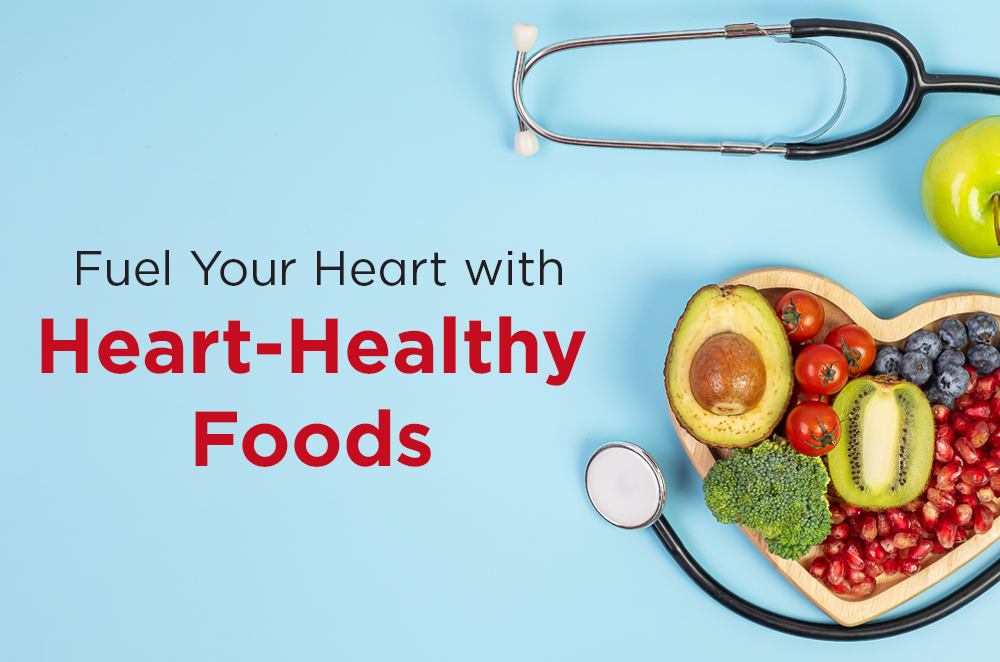Let’s talk about something super important – our hearts! One of the best ways to give our tickers some love is through the food we eat. Think of it this way: you wouldn’t put cheap gas in a fancy sports car, right? The same goes for your heart. It deserves the good stuff! Therefore, how do we “fuel our hearts” with heart-healthy foods? It’s not as scary as it sounds, I promise. It’s about making smart choices and finding delicious ways to incorporate heart-healthy habits into our daily lives.
Heart-Healthy Foods
Eating heart-healthy foods doesn’t have to be complicated. It just means that we have to focus on a balanced diet packed with the right foods. Think of it as giving your heart the VIP treatment it deserves! Specifically, this means loading up on colorful fruits and veggies, choosing whole grains over refined options, incorporating lean protein sources, and swapping unhealthy fats for the good stuff. So, let’s break down these key components and see how easy (and delicious!) it can be to fuel your heart with the nutrients it needs to thrive.
The key is to focus on a balanced diet rich in:
Fruits and Veggies: Aim for a colorful variety – think vibrant berries, leafy greens, and crunchy veggies. They’re packed with vitamins, minerals, and fiber, which are all heart-friendly.
Whole Grains: Swap out white bread and pasta for whole-grain options like brown rice, quinoa, and whole-wheat bread. In addition, they’re higher in fiber, which helps lower cholesterol.
Lean Protein: Choose lean protein sources like chicken breast, fish, beans, and lentils. Furthermore, fish, especially fatty fish like salmon, is a great source of omega-3 fatty acids, which are fantastic for heart health.
Healthy Fats: Not all fats are created equal! Ditch the saturated and trans fats (found in processed foods) and embrace healthy fats like those found in avocados, nuts, seeds, and olive oil. For instance, these healthy fats can actually help lower your cholesterol.
Meal Planning
Meal planning is a game-changer for eating heart-healthy foods! It helps you stay on track and avoid those last-minute, less-healthy takeout temptations. Here’s how to make it work for you:
First, plan your meals for the week: Take some time on the weekend to map out your breakfasts, lunches, and dinners.
Next, make a grocery list: Stick to your list at the store to avoid impulse buys.
Then, prep ahead: Chop veggies, cook grains, or portion out snacks in advance to save time during the week.
Finally, cook once, eat twice (or thrice!): Double recipes and freeze leftovers for future meals.
Decoding Food Labels
Food labels can be confusing, but understanding them is crucial for making informed choices. Therefore, pay attention to:
Serving size: This tells you how much of the food a single serving is.
Total fat: Look for low amounts of saturated and trans fats.
Cholesterol: Keep cholesterol intake in check.
Sodium: Limit sodium intake, as it can raise blood pressure.
Fiber: Aim for foods high in fiber.
Added sugars: Minimize added sugars.
You can even simplify your grocery shopping and find heart-healthy foods with the American Heart Association’s Heart-Check digital grocery list tool. Easily search for Heart-Check certified products, build your shopping list, and even print or email it for convenient access at the store. The tool is regularly updated, so you’ll always have the latest list of heart-healthy options, including fruits, vegetables, nuts, cereals, lean meats, poultry, fish, and more.
Personalized Advice
Want personalized advice on eating for a healthy heart? Your doctor is your best resource. In addition, if you’re looking for a physician who understands your nutritional goals, our referral line can help you find the perfect match. Remember, taking care of your heart is easier than you think! By making small changes to your diet and lifestyle, you can make a big difference. So, let’s give the gift of health this month (and every month!) and fuel our hearts with heart-healthy foods. Your heart will thank you for it!
Resources:
https://www.nhlbi.nih.gov/health/heart-healthy-living/healthy-foods
Disclaimer:
The Comanche County Memorial Hospital website does not provide specific medical advice for individual cases. Comanche County Memorial Hospital does not endorse any services obtained through information provided on this site, articles on the site or any links on this site.
Use of the information obtained by the Comanche County Memorial Hospital website does not replace medical advice given by a qualified medical provider to meet the medical needs of our readers or others.
While content is frequently updated, medical information changes quickly. Information may be out of date, and/or contain inaccuracies or typographical errors. For questions or concerns, please contact us at contact@ccmhhealth.com.

